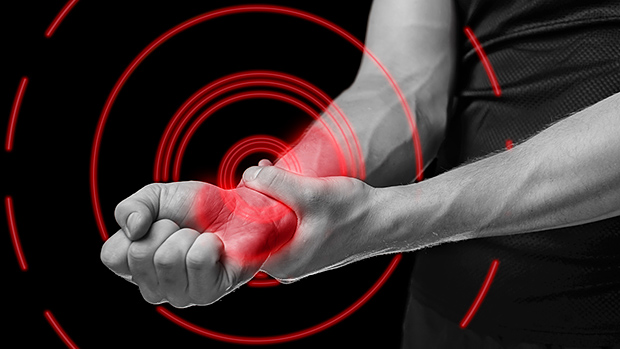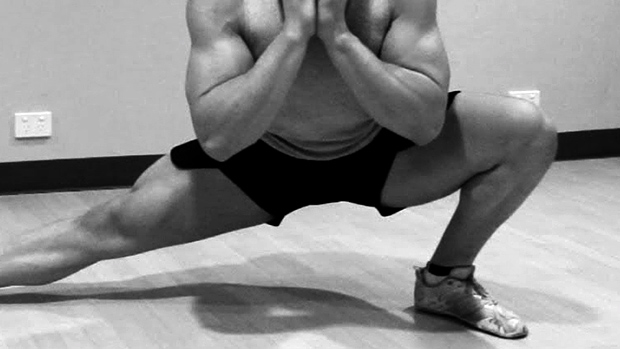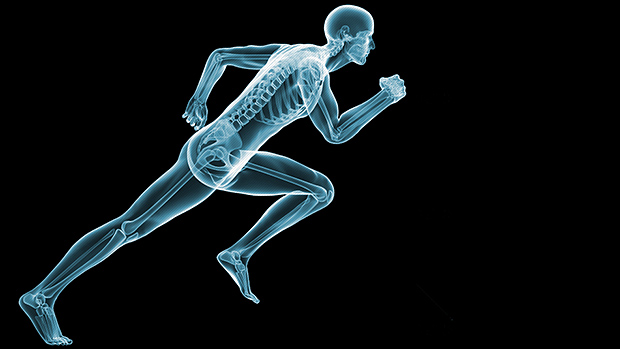Over the summer, I published a three-part series called Shoulder Savers. The response was overwhelmingly positive. In fact, it was so positive that TC and Tim gave me the keys to the Spike tour bus and sent me on vacation with all the Spike girls.
Here are thirteen tips to keep your elbows and wrists healthy.

Not to be confused with wrist straps, which help you hold onto the bar, wrist wraps have made a huge difference in keeping my elbows and wrists healthy.
I think we really overlook the importance of a wide base of support in increasing stability of our joints. We know that bracing the midsection is superior to the "thin tummy" recommendations for creating spinal stability when we put a weight on our back, so why not apply the same principles to our wrists when we bench?
Unfortunately, we can't exactly brace the wrist via a built-in physiological mechanism as we do with the spine. However, we've got to do something because the wrist is a joint that's extremely vulnerable to injury given its small circumference. Compare your ankle and wrist circumferences and you'll always find that the ankle is greater. (My wrist measures up at a whopping six inches.)

The ankle is built for stability and needs more mobility training. Conversely, the wrist is built for mobility, but it lacks stability – stability that can be artificially created with a wrist wrap. I'm not saying that you have to use them all the time, but they're certainly a useful inclusion in your training bag for your heaviest sets and the highest volume weeks.
Jim Wendler recently put together a fantastic piece on how to wrap a wrist. Check out Casting Your Wrists and then pick up a pair of wrist wraps.
The overwhelming majority of the elbow pain I see in lifters occurs along the medial aspect of the elbow, and almost all of these lifters report doing a lot of extensions.

I think that this is a perfect example of how muscles can grow to be too strong for a joint. The wrists, elbows, and shoulders should share heavy loading in the upper body, but when you take the shoulders (the strongest of the three joints) out of the equation and maintain a lot of the weight, you can wind up with some tender elbows.
I'm not saying that you shouldn't do extensions (although most Testosterone readers should realize that they ought to be doing almost exclusively compound movements). What I'm saying is that they should be applied judiciously (or not at all) throughout the year.
Ask any powerlifter with monster triceps and he'll tell you that they were built with loads of heavy bench press variations: board presses, floor presses, rack lockouts. Those should be your bread and butter movements.
I know what you're thinking: "This guy knocks extensions, and now he's telling us it's okay to curl? What's the deal?"
I like to think of it as undoing the damage. An intermediate or advanced lifter's upper body days will consist of one to two bench press variations, a set of direct triceps work, and a set of rows or pulldowns. That's a 2:1 or 3:1 ratio of elbow extension to elbow flexion work.
Tossing in some more rows each session – and including two to three sets of curls a few times a month – can do wonders for getting things back into balance. Be sure to alternate among the supinated, neutral, and pronated grips.
I raved about Blue Heat in my shoulder articles. Well, it works even better on elbows. Combine it with a solid warm-up and you'll notice a dramatic difference in how good your elbows feel on your first few sets.
And, if that isn't good enough, a little whiff of that strong menthol-like scent ought to wake you right up.
It might seem like a no-brainer, but it always amazes me that people just can't go a week without benching a) heavy and b) with a barbell. I have a multi-pronged approach to deloading the bench that depends on the experience of the lifter:
Beginner: Don't deload them; just give them new exercises and make sure structural balance is in place. They aren't neurally efficient enough to warrant a true deload; just make sure the exercises are rotated every four to six weeks.
Intermediate: Maintain or slightly increase intensity, but drop the volume by 40% (e.g. 3 x 5 instead of 5 x 5; 5 x 3 instead of 5 x 5).
Advanced: Drop intensity and just get your reps in. Whether you do 3 x 12 or 2 x 20, the important thing is that it's a break from the heavy loading, but you're still getting plenty of bloodflow to the area.
With intermediates and advanced lifters, it's best to get away from the barbell for a week at least every eight weeks. I might use dumbbell bench presses on the stability ball, regular bench, or floor for these.
Thinking back to my days of gross anatomy, I can say without hesitation that the muscles of the forearm were the absolute hardest to memorize. There are a ton of them in a very small area.

This should make it very obvious why the forearms and wrists are common sites of serious nerve entrapment conditions like carpal and ulnar tunnel syndromes. If you have access to Active Release, I'd highly recommend getting some maintenance work done on your elbows and forearms every three months or so. You'll be amazed at what a difference it makes. All those little muscles love to bind together and cause trouble!
If we're going to focus on tissue quality with soft-tissue work, we also better be emphasizing wrist flexibility. These five stretches should get the job done:



Speed benching is a fantastic way to improve your bottom-end strength on the bench press, but it can be very rough on the elbows. The main problem is that because you're typically strongest at lockout and you've had time to generate a lot of bar speed through the range of motion, your elbow flexors have to do a ton of work to decelerate the bar.
Over time, your elbows can get so sore that you'll actually want to intentionally lift the bar slowly on submaximal sets just so that you don't have to decelerate the bar. There are three solutions to the problem:
- Just drop the speed benching and increase the load of the bar, doing rep work instead with a moderate to heavy weight.
- Add some form of accommodating resistance such as chains (preferred) or bands. By adding these implements, the load is more at the top, meaning you won't have to decelerate the bar as much.
- Select a speed training approach that doesn't require open-chain deceleration. You can either do medicine ball throws or plyo push-ups.
Kneeling overhead medicine ball stomps are a good choice, especially if you're looking to avoid straight-bar benching with an overhead throwing athlete.
Medial elbow pain is the most common symptom of valgus-extension overload, a series of elbow pathologies that we see quite a bit in overhead throwing athletes and lifters. One of the last in this pathology series is ulnar nerve entrapment, a condition that usually leads to numbness/tingling in the pinky and ring fingers.
Believe it or not, many people develop ulnar nerve problems not from athletics, but excessively leaning on their elbows! So, if you're in the habit, stop!
Likewise, Radial Nerve Palsy has been nicknamed "Saturday Night Palsy" because it often occurs when drunk individuals fall asleep on their arms in awkward positions (imagine falling asleep with your arm over the back of a bench or couch). Generally, the impingement occurs at the mid-portion of the upper arm, but the symptoms that develop typically include finger and wrist drop.
If you're someone who sleeps with your arms overhead and your head resting on your biceps, you might want to break the habit. Additionally, those who are on crutches should be cognizant of the problems that can arise in this regard.
As I noted earlier, nerve entrapment issues are a serious problem at the elbow, wrist, and hand. Many of these problems originate with poor posture at the computer. Here are some suggestions on this front:
- Type with your wrists in neutral, not radial or ulnar deviation.
- Don't type with your wrists in hyperextension. The same goes for mouse usage: don't let the wrist "bend back."
- Don't elevate your keyboard. Contrary to popular belief, lifting the back of your keyboard doesn't reduce the risk of repetitive stress disorders; it actually increases them! Your keyboard should be flat and preferably at elbow level.
- If you find that you're resting the base of your hands on the table, pick up one of those small gel pads to give you a bit of a lift.
- Take regular breaks and remember that the best posture is the one that's constantly changing.
- Get a secretary or personal assistant to do all your typing for you. For best results, this secretary should be drop-dead gorgeous and promiscuous.





You won't find this anywhere in the scientific literature, but anecdotally speaking, anything that promotes bloodflow to the elbow joint will work wonders for keeping you healthy.
I prefer high rep band pressdowns and band curl variations. My personal experience tells me that a few sets of 20 nice and easy each day should yield appreciable results in a matter of a week or so. Tossing in a little bit of rotator cuff work with the band while you're at it wouldn't hurt, either.
This is a trick I stumbled onto by accident about two months ago. After hearing that Mike Robertson had tweaked his knee skiing, I just had to one up him and be a dumbass powerlifter who got hurt playing recreational softball.
Long story short, I jammed my hand and wrist into quite a bit of hyperextension on a slide, and benching was out of the question for a good three weeks.
When I got back to benching, I found that the regular bar was too "focal" in nature. That is, the thinner bar put all the weight on a smaller portion of my hand – and the wrist really didn't like that. So I decided to give the thick bar a shot, as it disperses the weight a bit more over the entire palm. It worked like a charm and my grip strength improved quite a bit in the process!
This is a bigger problem than you can possibly imagine. There are a lot of people who initiate a deadlift without having the elbows fully extended. In most cases, the problem occurs with individuals who are very quad-dominant and want to squat the weight up instead of pulling it with their hamstrings and glutes.
They drop so low that the arms go slack, leaving them to initiate the pull with the elbows flexed. Serious injuries – both acute and chronic – can occur when the muscles crossing the elbow joint are "snapped" into tension as the hips and knees extend.
This technique flaw will also limit the amount of weight you can use, as the momentum generated from the lower extremities is lost when the elbow is slack. It never gets to the bar. This scenario is comparable to trying to punch someone with a limp wrist.
If you're having these problems, get your lower back arched a bit more, butt a little higher, and chest up. Imagine a mirror in front of you: you want to see the logo on the front of your shirt in it at the starting position. As the chest is pulled more upright, the arms will become taut.
One final trick is to just tighten up your triceps a bit when you're in the bottom position; it'll ensure that you're locked into elbow extension.
Have a tip or two to complement the thirteen I've outlined? Feel free to post it as a response to this article and we'll build healthy elbows and wrists together!





